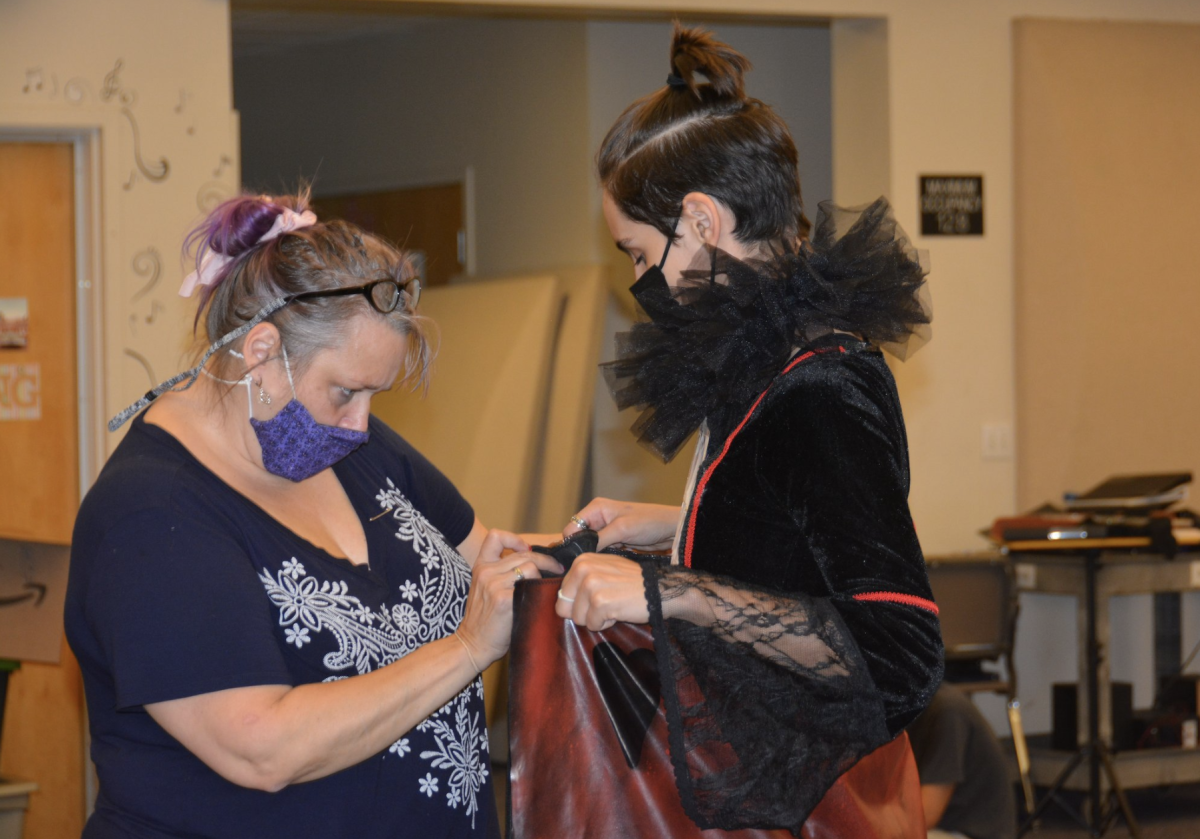Senior Vidhi Goel didn’t have a sewing machine when she began designing costumes for MV Drama’s play “Still Life with Iris” last March. Instead, she had to hand-sew each colorful square on the Memory Mender’s coat one by one. In a process that took over 20 hours, Goel packed the outfit with details embodying the essence of the Memory Mender character: buttons, a thimble-shaped hat and a tool belt and cane decorated with measuring tape, representing his skill in repairing clothes.
As the costume department lead, Goel designs outfits for actors to wear in shows. When she first joined the department, she was responsible for groundwork such as sewing ties for background characters. After two years of experience, Goel says she has learned valuable sewing techniques, allowing her to put together her own costumes.
“At first, I was just cutting fabric whenever the costume lead told me to, but now I have way more creative freedom,” Goel said. “I can design and execute my own costumes and that kind of freedom is great. I can create symbolism in the costumes, even if no one else can spot it.”
Like Goel, senior Naomi Mhamunkar’s interest in fashion inspired her to opt for the costume department her sophomore year. The department leads gave Mhamunkar opportunities to practice her embroidery skills by altering buttons and fixing petticoats for costumes. She now sews fabric backdrops and flags for the set design department.
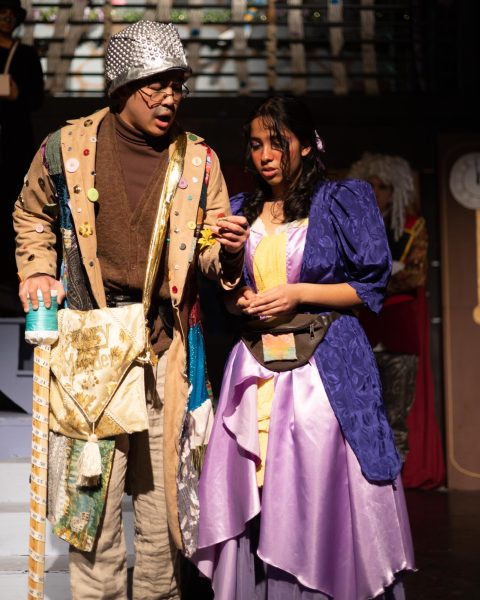
“I was either going to be an actor for our school’s production called ‘Alice in Wonderland,’ or I was going to costume it,” Mhamunkar said. “I focused on costuming more because of the people that were involved in it — I thought it was going to be a really safe and welcoming community.”
While Mhamunkar and Goel started in their sophomore years, the first production senior Madi Polidoro worked on was “Bright Star,” the spring play in her freshman year, which was online. Although designing costumes over Zoom was challenging, Polidoro reflects on the versatility of the skills she learned, from drawing croquis — a quick fashion illustration — to using a sewing machine.
“We had people send in their measurements and then we learned how to translate measurements from a piece of paper on the physical clothing,” Polidoro said. “[We also learned] how clothing fits on a body. It doesn’t necessarily look the way it’s going to look on a body [when it’s] on the hangers, so that was really valuable and cool to understand.”
Before assembling the costumes, the costume department, led by costume director Lynda Cameron-Bayer, collaborates with the other tech departments to develop a theme for each play. Goel then creates moodboards, selecting color schemes and fashion styles based on the time period of the production, and sketches out her vision for the design.
“We look at the script to see what the traits of each character are, because the costumes are built and designed to symbolize who they are,” Goel said. “If a character is deceptive, they might wear a cape or a mask or have a mustache to symbolize that they’re under a disguise, or throughout the duration of the play, they [might] take off pieces of their outside accessories and clothing to symbolize their true colors slowly being revealed.”
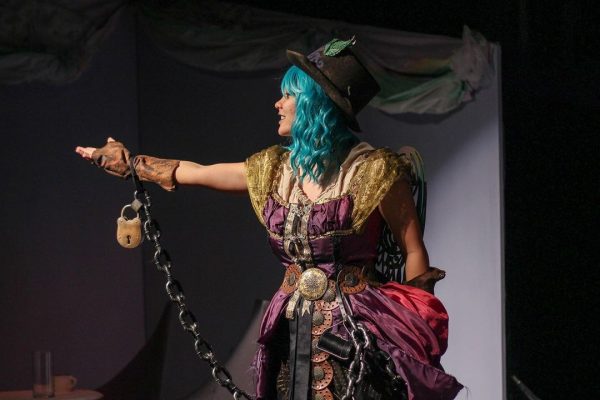
To ensure a costume fits, members of the costume department first create a base for actors to try on. After fitting the base, they incorporate the characters’ traits through the costume design and accessories.
For “Peter and the Starcatcher,” MV Drama’s fall 2022 production, Polidoro used sea motifs to design a set of mermaid costumes. Drawing inspiration from siren mythology and a visit to the beach, she and Cameron-Bayer added green tulle and skirts made of Loctite, an adhesive, to a blue base, resembling seaweed dripping from the mermaids’ tails. Polidoro says one of her favorite aspects of costuming is how resourceful she can be with materials.
“I never would have thought to use Loctite without the principles that [Lynda] taught the rest of the costume department, which is that anything can be made into a costume if you manipulate it,” Polidoro said. “Vidhi made a hat that’s supposed to look like a thimble out of bubble wrap. That’s something Lynda does a lot — she’s very creative with how to manipulate things to look like what you want them to look like.”
Goel notes that MV Drama’s tight budget pushes the costume to be resourceful in other ways. The department prioritizes repurposing costumes before buying new ones — for instance, a snail costume Goel made two years ago has been used in every play since then. If the pieces aren’t already owned by Drama, members of the department will buy cheaper fabric from thrift stores. By rehearsal week, Cameron-Bayer and the costume department typically have a rack of costumes ready for actors to wear.

“Seeing [the costume] executed on stage and looking good is the best part,” Polidoro said. “It’s kind of strange. You feel proud but then you’re also like, ‘That doesn’t look like what it looked like’ when you were in the weeds of [making] it. But it’s really cool to see.”
Goel, Mhamunkar and Polidoro have all found a place for their sewing skills outside of Drama, fixing and making clothes for themselves. To Goel and Mhamunkar, the costume department was an essential part of this journey. Mhamunkar advises other students interested in fashion to go for it, even if they feel intimidated by fashion runways or are unsure of their creative abilities.
“You’re still in high school,” Mhamunkar said. “You don’t have to set yourself to the standards of Versace or whatever. But it’s important to start with something. [Even if it’s] just embroidering some stuff to get used to how to use a needle [and] fabric, start somewhere rather than meandering on it.”
This story was originally published on El Estoque on November 1, 2023.




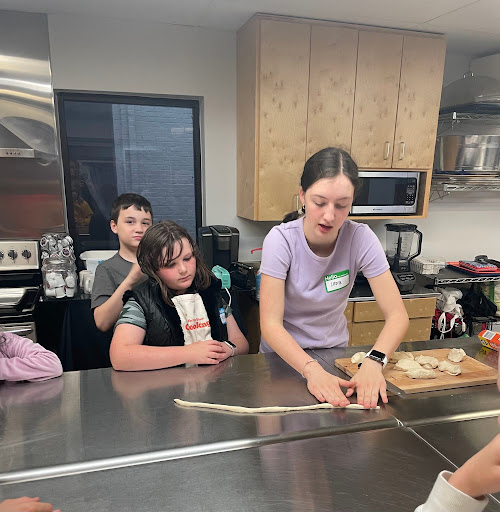
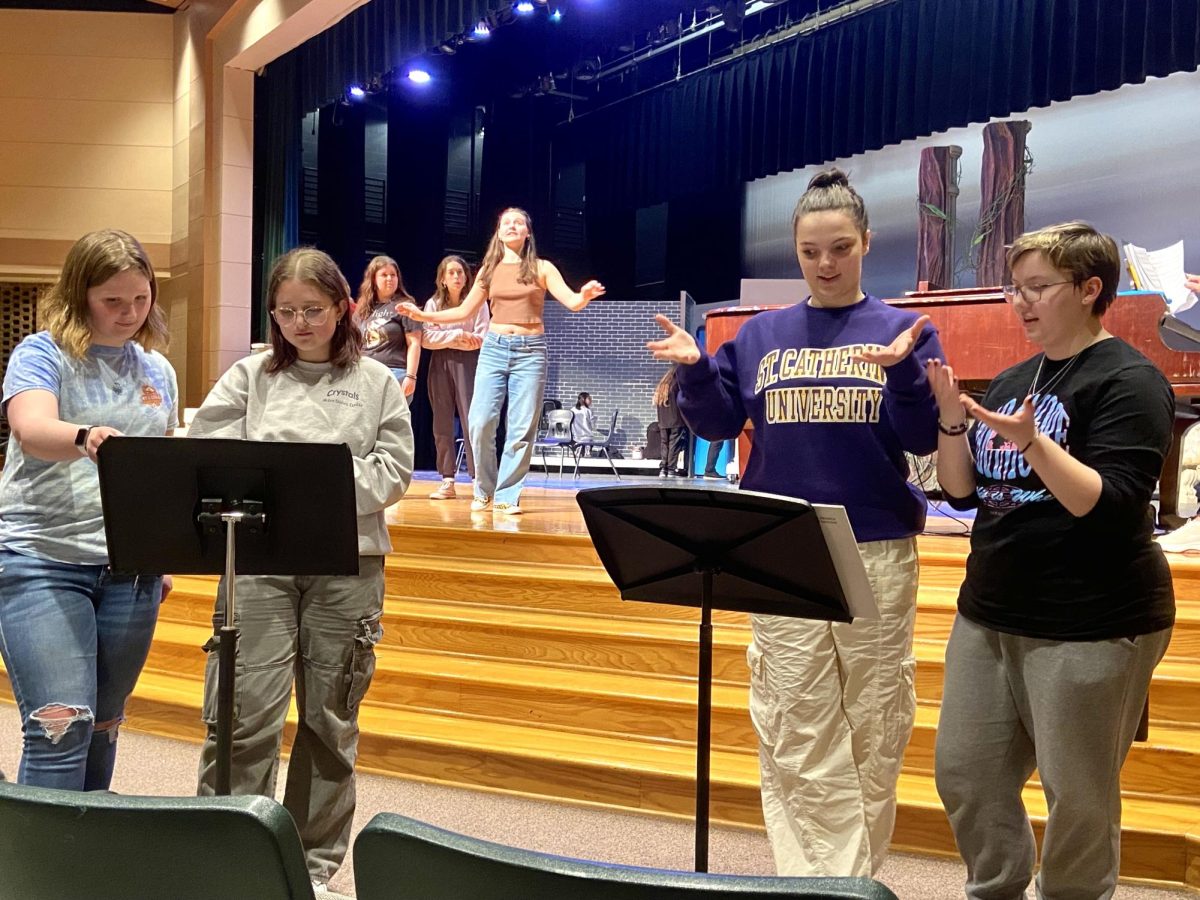
![It was definitely out of my comfort zone to get [the dress] and decide I loved it enough not to wait and risk not having something that memorable.](https://bestofsno.com/wp-content/uploads/2024/04/Precious_20180902_JRS_00008_ed1.jpg)


![Sophomore Sahasra Mandalapu practices bharatanatyam choreography in class. These new dances will be performed in an annual show in February. Mandalapu found that practicing in class helped her overcome stage fright during her performances. “When [I] get on stage, Im nervous Im going to forget, even though Ive done it for so long,” Mandalapu said. “Theres still that little bit of stage fright [when] I second-guess myself that I dont know it enough, but I do because Ive been practicing for a whole year.”](https://bestofsno.com/wp-content/uploads/2024/05/Sahasra-6-Large-1200x844.jpeg)

![In their full runway outfits, (from left) Audrey Lee 25, Olivia Lucy Teets, 25, Fashion Design teacher Ms. Judy Chance, and Xueying Lili Yang pose for a photo. All three girls made it to Austin Fashion Week by getting in the top 10 in a previous runway show held by Shop LC.
[I like my students] creativity and how they can look at a fabric and make it their own, Ms. Chance said.](https://bestofsno.com/wp-content/uploads/2024/04/IMG_9686-e1714088765730-1129x1200.jpeg)














![IN THE SPOTLIGHT: Junior Zalie Mann performs “I Love to Cry at Weddings,” an ensemble piece from the fall musical Sweet Charity, to prospective students during the Fine Arts Showcase on Wednesday, Nov. 8. The showcase is a compilation of performances and demonstrations from each fine arts strand offered at McCallum. This show is put on so that prospective students can see if they are interested in joining an academy or major.
Sweet Charity originally ran the weekends of Sept. 28 and Oct. 8, but made a comeback for the Fine Arts Showcase.
“[Being at the front in the spotlight] is my favorite part of the whole dance, so I was super happy to be on stage performing and smiling at the audience,” Mann said.
Mann performed in both the musical theatre performance and dance excerpt “Ethereal,” a contemporary piece choreographed by the new dance director Terrance Carson, in the showcase. With also being a dance ambassador, Mann got to talk about what MAC dance is, her experience and answer any questions the aspiring arts majors and their parents may have.
Caption by Maya Tackett.](https://bestofsno.com/wp-content/uploads/2024/02/53321803427_47cd17fe70_o-1-1200x800.jpg)
![SPREADING THE JOY: Sophomore Chim Becker poses with sophomores Cozbi Sims and Lou Davidson while manning a table at the Hispanic Heritage treat day during lunch of Sept 28. Becker is a part of the students of color alliance, who put together the activity to raise money for their club.
“It [the stand] was really fun because McCallum has a lot of latino kids,” Becker said. “And I think it was nice that I could share the stuff that I usually just have at home with people who have never tried it before.”
Becker recognizes the importance of celebrating Hispanic heritage at Mac.
“I think its important to celebrate,” Becker said. “Because our culture is awesome and super cool, and everybody should be able to learn about other cultures of the world.”
Caption by JoJo Barnard.](https://bestofsno.com/wp-content/uploads/2024/01/53221601352_4127a81c41_o-1200x675.jpg)




